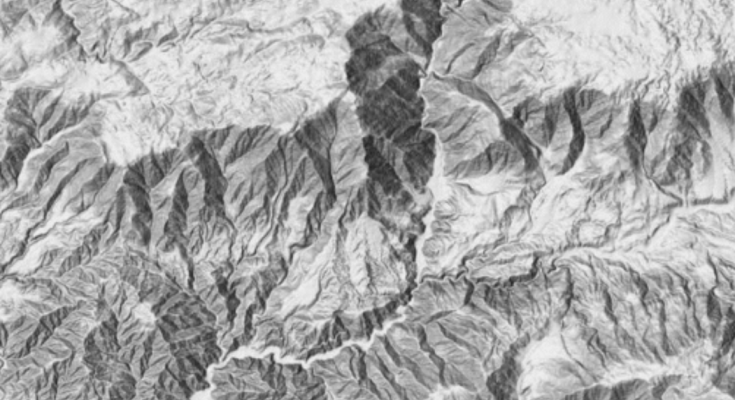Are you tired of boring, flat maps in your reports or presentations? Are you looking to provide your audience an visual and immersive experience? If so, then look at Hillshade Lapakgis! This amazing tool lets anyone to create breathtaking 3D maps of terrain that help any project become a reality. In this blog we’ll demonstrate how easy it is utilize Hillshade Lapakgis and give you guidelines for making the most stunning maps you can. Get a cup of coffee, relax and get ready to take your map-making abilities to new heights!
What is Hillshade Lapakgis?
Hillshade is a 3-dimensional representation of the surface of a terrain. It is made by the combination of the DEM (Digital Elevation Model) with raster information such like ortho images or even land covers. It is the result of a three-dimensional image that is capable of creating amazing visualizations of the terrain.
There are a myriad of methods to design a hillside, but the most commonly used method is to utilize Lapakgis. Lapakgis is a no-cost and free GIS software that permits you to create stunning hillshades. This article will demonstrate how to make amazing D Terrain maps using Hillshade Lapakgis.
Advantages of Hillshade Lapakgis
Hillshade Lapakgis is an extremely powerful tool for mapping terrain that produces stunning 3D maps of earth’s surface. The primary benefit of this software is that it is able to create maps with high-quality accuracy that look realistic and appealing to the eye. Furthermore using hillshade permits the creation of precise topographical maps that could be used for many reasons, including creating hiking trails, assessing areas for development and analyzing the layout of land to be used for agriculture purposes.
How to Set Up Hillshade Lapakgis?
For creating an amazing D maps of terrain, first establish hillshade. Hillshade is a layer of data which helps to relieve your map and makes it appear more three-dimensional. It’s simple to set up and utilize in Lapakgis and will transform your maps!
To configure your hillshade within Lapakgis start by opening the Layer Manager and then click on the “Add Layer” button. On the “Add Layer” dialogue box you can select “Hillshade” from the list of layer types available. Then, you’ll be asked to select the DEM (Digital Elevation Model) file to create the hillshade layer. This DEM file will contain the elevation information that is used to create hillshade effects.
After you’ve chosen the DEM file, make sure you specify parameters for the hillshade layer. The most crucial setting is “Azimuth,” which sets the angle of sunlight to create the shadow effects that you want to create in the layer of hillshade. The ideal starting place is 300 degrees but you can play around with various values to determine which one looks the best on your map.
Once you’ve completed all of your settings After that, select “OK” to add the hillshade layer to your map. It should appear as relief shading appearing on your map that gives it a more 3-dimensional look!
Tips on Generating Stunning Terrain Maps Using Hillshade Lapakgis
If you’re looking to create breathtaking maps of terrain hillshade is the method to go. Hillshade employs an algorithm to create the representation of a landscape three-dimensionally using the digital elevation model (DEM). This technique is frequently used to create topographic maps. It produces stunning, precise images of all terrains.
To create a hillshade map it is necessary to have the DEM file. You can search for DEM files online for free or create your own with GPS data. Once you have an DEM file then open it in Lapakgis and then select”Hillshade” from the “Hillshade” tool. Utilize the default settings for the most effective results.
After you’ve created your map of hillshade You can then make use of it as is or modify it further using Lapakgis. Click”Edit,” then click on the “Edit” tab to edit your map, and alter the elevation as well as slope, aspect and many other settings. After editing, save your map in an PNG as well as a JPEG file.
With Lapakgis making stunning maps of terrain is simple and enjoyable!
Examples of 3D Terrain Maps Created
There are a myriad of methods to produce amazing 3D terrain maps, however, among the more well-known techniques is to make use of hillshade. Hillshade is an extremely powerful tool that can be utilized to create accurate and realistic 3D models of landscapes. Lapakgis is a great example of software that permits users to design hillshade maps. With Lapakgis you are able to create stunning and precise 3D maps of terrain.
Alternatives to Creating 3D Terrain Maps.
There are a variety of methods to make 3-D (3D) topographic maps however there are many different methods to choose from. Hillshade lapakgis is among the most widely used methods for creating these maps, however there are other options you might want to think about.
An alternative to using hillshade pakgis is to employ contour lines. Contour lines are the type of line in the 2D map to indicate the elevation change. You can create a 3-D effect using different colors or the thickness of contour lines in order to display the various elevation changes. This technique can be utilized for any type of map, even those that do not have relief information.
Another option is to make use of Digital elevation models (DEMs). DEMs can be described as three-dimensional images of Earth’s surface and contain information about elevation. They can be made by using satellite images, aerial photos and ground survey data. It is possible to use DEMs to make 3D map of terrain in many ways, such as using them as layers within your GIS software or turning to an image that you can import into the 3D modeling program.
Whichever method you decide to use, creating amazing 3D maps of terrain is simple using the appropriate tools and methods.




